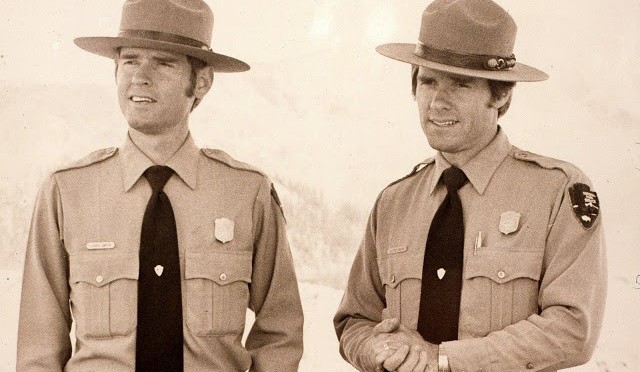Along with the cement picnic tables and the metal firegrates. It was as if every park was designed to look like every other park.
You gave that talk to my class about the uniqueness of the state parks of Oregon. I learned a lot through that thing, but realized that even the fireplaces were important to the design of state parks. Where did they get their ideas? From the national parks. You go into the California parks and see what Drury did down there (47). Then the Park Service lost that so fast to utilitarianism. You hate to see that being lost. I think you have to do a certain amount in budgeting things. You have to go utilitarian often times, but look at the sign for headquarters. There used to be a beautiful rock pillar there with redwood sign saying National Park Service headquarters. Now you got a 4 x 4. I guess it’s still hanging there. I don’t know if it’s been changed. It’s just kind of hanging there, swinging in the breeze. No style, no style at all. Then they bulldozed down the old entrance station signs and put up the rusty metal instead. The idea was never to paint because it will oxidize and turn black on its own accord (48). That work in the desert. Old farm machinery does that. It doesn’t keep rusting. That thing is sandblasted every spring and every fall it starts rusting again. They still look ugly not being painted. But they’ve saved a lot of money.
Who knows where the money went.
The budgets have gotten bigger and bigger. It seemed to me the very best operation of the park was when Medford had the main office (49). Because you kept the bureaucrats out of the park. A park was a park. Things that can be done anywhere could be done in Medford. It wasn’t like the cluster office, where they could never decide what the chain of command was going to be (50). That was the problem with the cluster office. I still think it was a good idea. It just didn’t work because it was unworkable from the way it was set up and not establishing way of command. Who was in change? Ernie [Borgman], or was it Mr. Betts? Well, on paper Ernie was but really Betts was, that type of thing.


